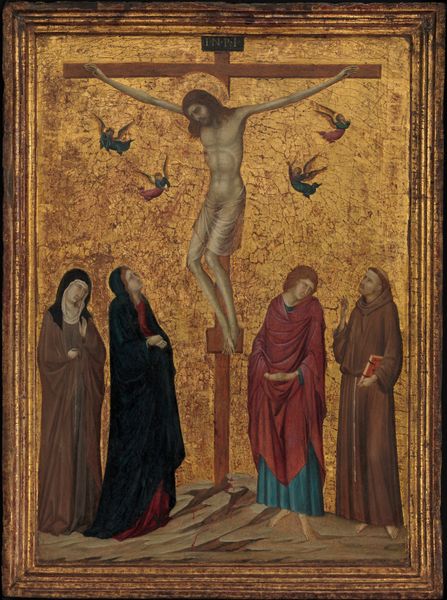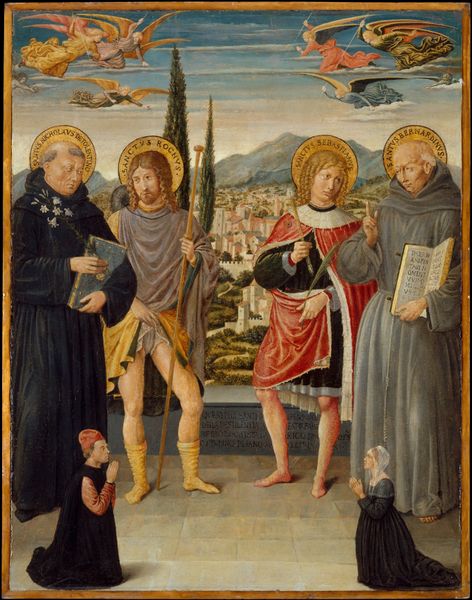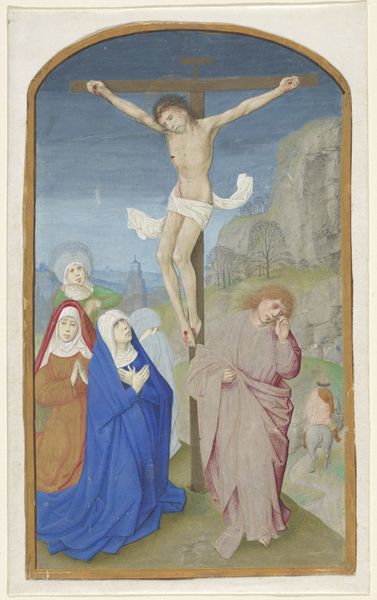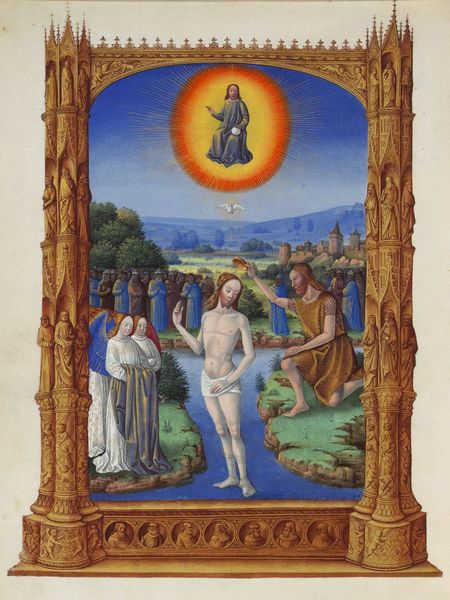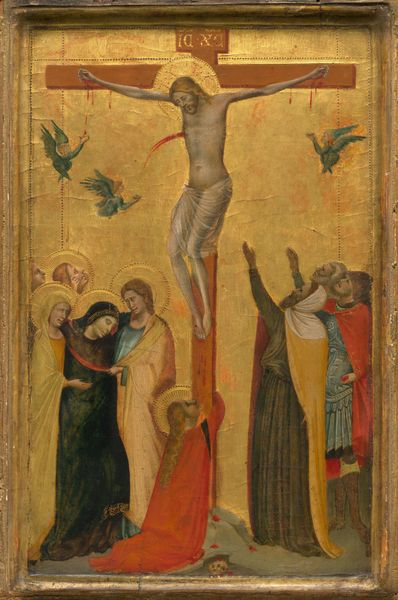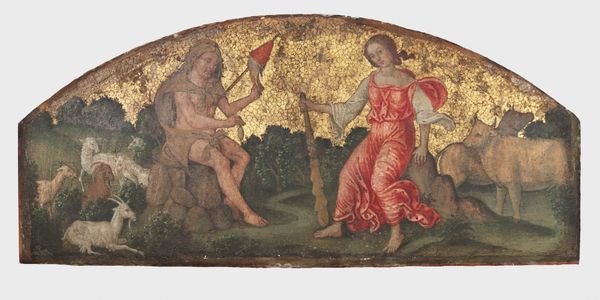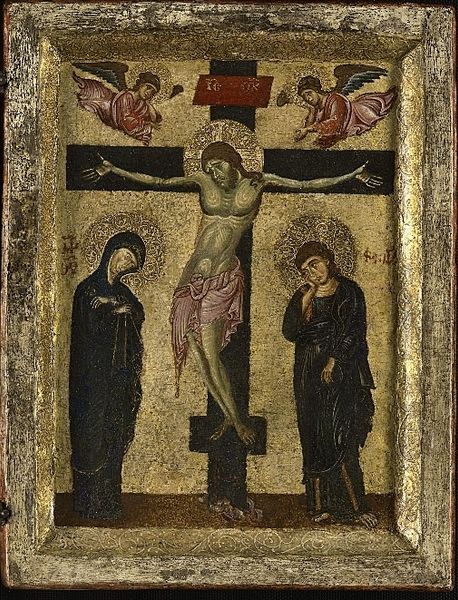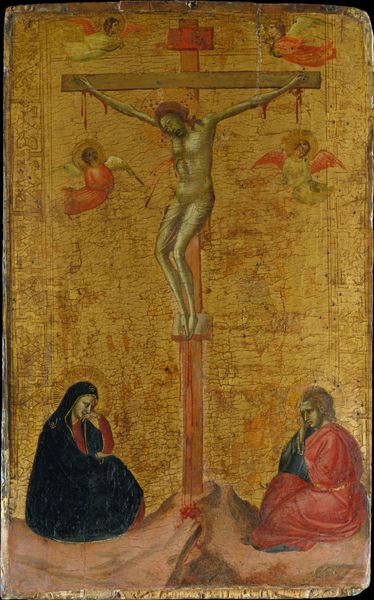
tempera, painting, gold
#
medieval
#
narrative-art
#
tempera
#
painting
#
gold
#
figuration
#
oil painting
#
chiaroscuro
#
history-painting
#
italian-renaissance
#
early-renaissance
Dimensions: painted surface: 46.3 × 49 cm (18 1/4 × 19 5/16 in.) overall (original panel): 48.8 × 41.2 cm (19 3/16 × 16 1/4 in.) overall (including added strips): 49.6 × 42 cm (19 1/2 × 16 9/16 in.) framed: 56 x 48.6 x 4.6 cm (22 1/16 x 19 1/8 x 1 13/16 in.)
Copyright: National Gallery of Art: CC0 1.0
Editor: So, this tempera painting, "The Baptism of Christ," was created around 1335 by Giovanni Baronzio. I’m struck by the figures; they seem caught between this earthy landscape and the ethereal gold background, this sense of human forms aspiring to something divine. What stands out to you as you consider this piece? Curator: What strikes me is how Baronzio uses this religious scene, central to Christian doctrine, to also explore ideas around power and social order in the 14th century. The act of baptism, ostensibly about spiritual cleansing and rebirth, also operates as a visual representation of hierarchical structures and the Church's authority during this period. Editor: Could you elaborate on that a little? I was just seeing a biblical scene. Curator: Look at the way John the Baptist dominates Jesus in that moment of immersion, his hand literally guiding Christ. Then think about the institutional Church's dominance. Baptism wasn't just a personal act of faith; it was a ritual legitimizing belonging and social standing, defining who was inside and outside of the dominant cultural narrative. Notice how the angels also observe this from the other side. It seems to represent the earthly versus heavenly dichotomy. Editor: So, you're saying Baronzio isn't just depicting a religious event, but is also commenting on how religious rituals enforce social roles? Does the gold backdrop, and even the medium itself, tempera on panel, reinforce this hierarchical perspective? Curator: Precisely! Gold was valuable, signaling wealth and power. Tempera painting, associated with the Church at this time, solidifies these ideas. This is early Renaissance but firmly rooted in Medieval traditions and structures of belief. Think about the painting's intended audience, likely wealthy patrons or the Church itself; the work reinforced their worldview and position in society. Editor: This really gives me a lot to think about—how even religious art is never politically neutral. I’ll definitely approach art differently from now on! Curator: It’s about understanding art as part of an active social fabric and acknowledging how art continues to be intertwined within it, even now.
Comments
No comments
Be the first to comment and join the conversation on the ultimate creative platform.


